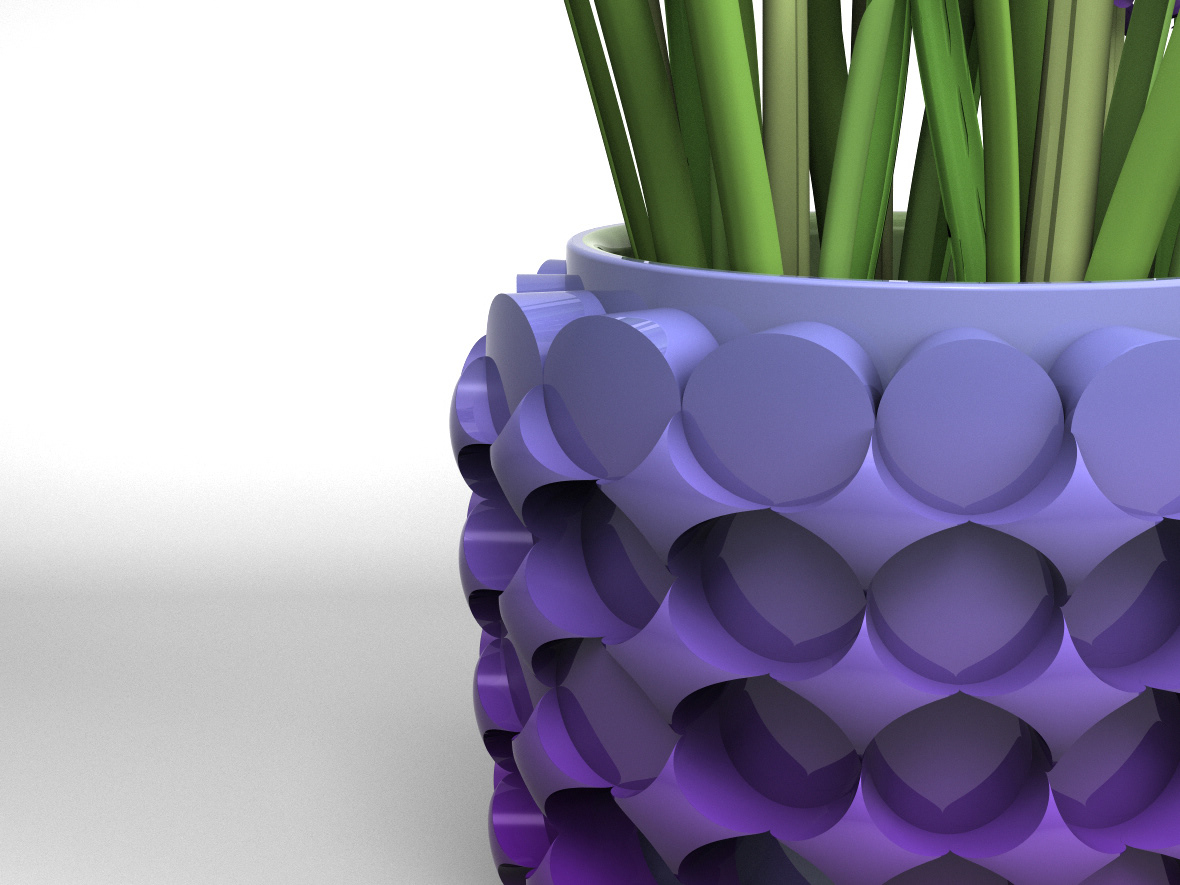
These flower pots were created in response to three myths contained in Ovid's Metamorphoses. Each selected myth tells the tale of how a young man is transformed into a type of flower. The form of each pot takes inspiration from one of the stories, and is meant to hold the flower which the story portrays.
Narcissus


Ovid's Narcissus tells the story of a beautiful and vain young man who, on catching sight of his reflection in a forest pond, is spellbound by his image and, unable to look away, wastes away. Upon his death his body disappears, and his human form is replaced by a flower that bears his name.
The repeated hexagons in this form are derived from the six-petaled figure of the narcissus flower, which also provided inspiration for the gradient color on the outside of the flower pot. The inside is painted with a pale-blue hue, representing the reflecting pool into which Narcissus gazed, and the sky that it mirrored.
Adonis


Another beautiful youth, Adonis, was obsessively adored by Venus, the goddess of love and beauty. He himself finds great joy in the thrill of hunting, and despite Venus’ explicit wishes that he not pursue anything dangerous, he is determined to hunt down a wild boar. This chase ends in tragedy when the boar spears Adonis with its tusk, leaving him to bleed out. Upon discovering his body, Venus transforms him into the fragile anemone, a memorial to his beauty and her love for him.
The triangles that dominate this form are representative of the boar’s fatal tusk, and the color is drawn from the spilled blood, as well as the love that fueled Adonis’ transformation. The circles within the triangles relate to the flower, which has sphere-like buds. The anemone is a more delicate wildflower, and this flower pot is stouter to highlight its beauty.
Hyacinth


Similarly endowed with startling beauty, Hyacinth was loved intensely by the sun god, Apollo, and the two enjoyed sports together. Ovid’s tale turns tragic when a discus thrown by Apollo strikes Hyacinth on the head, ending his life. Wrought with grief, Apollo transforms the boy into a flower as a symbol of his loss.
The circles encircling this flower pot are representative of the discus and of the sun, and the shapes that fill the void between them relate to the form of the hyacinth’s petals. The outer color works to complement that of the flower, described by Ovid to be a purple hue.



